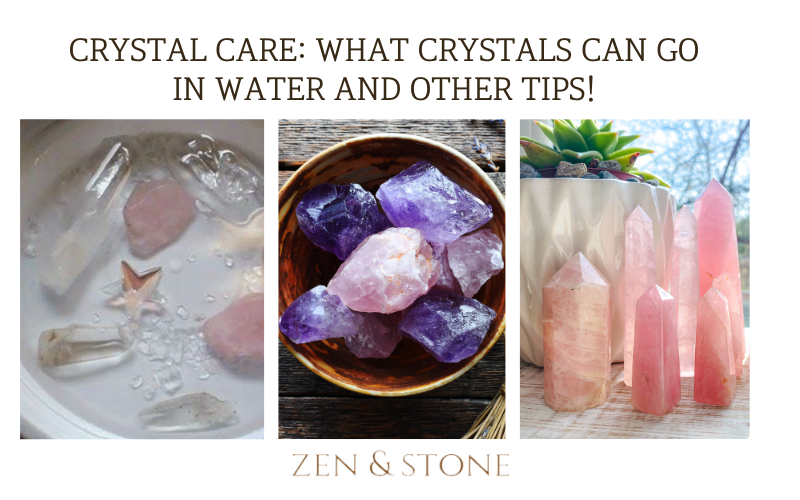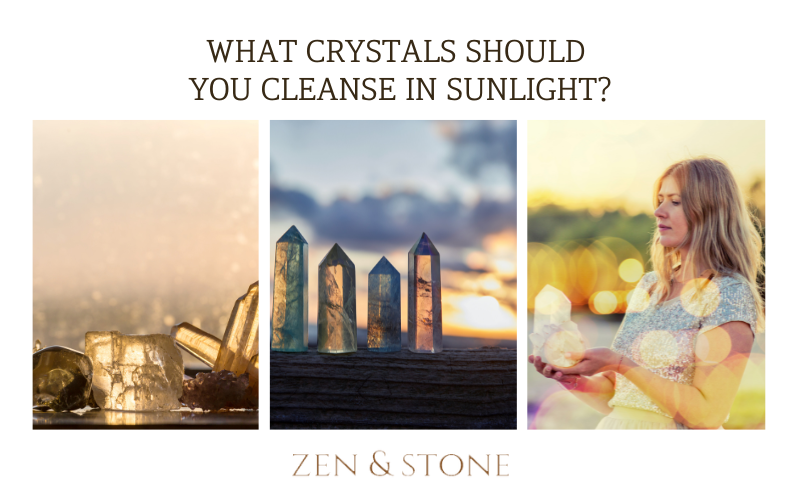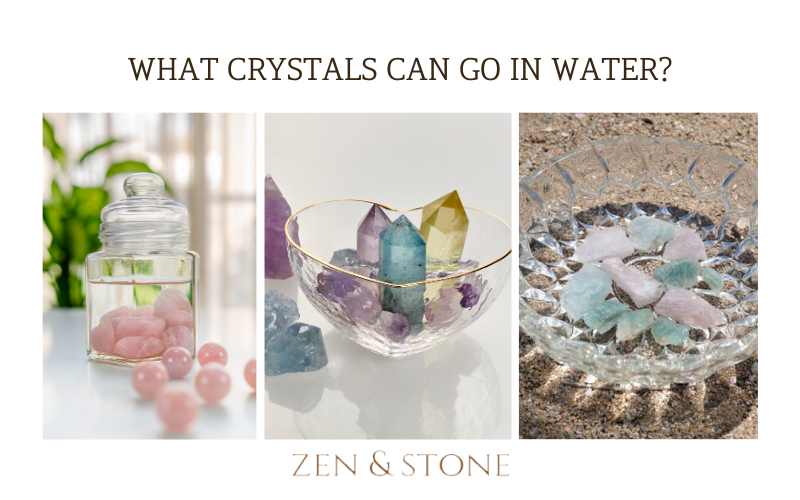
26 Nov Crystal Care: What Crystals Can Go in Water and Other Tips!
Crystal care requires basics. Knowing what crystals can go in the water when cleansing and what varieties can withstand the sun are important parts of crystal care. Crystals formed deep beneath the earth are sheltered from the sun.
It is important to understand crystal meanings and spiritual healing, but it is also as equally important to learn how to care for crystals properly.
Water is an essential element in the formation of crystals. It crystallizes to create the intricate solid patterns that make up the essence of these precious energy gemstones.
As an element of the inner earth, crystals, which were “born” in the absence of sunlight can be affected by it. Charging crystals in sunlight will rarely affect their hardness, but it does happen. Charging or cleansing crystals in water can also have effects on the stones.
Formed by a complex process of crystallization in which liquids cool and harden in an effort to form a stable solid, the solidity of each is different. The hardness of the crystal will decide what crystals can go in the water.
Crystals are classified by using the Mohs Hardness Scale. In using this scale which ranges from 1 to 10, the minerals are evaluated for their resistance strength. This test is performed by rubbing two minerals together to see which causes damage or scratches the other.
This scale can be used when deciding which crystals can be damaged by water. The softer the crystal’s mineral composition the more likely it will be damaged by water. If the crystal falls below 5 on the Mohs scale, it should not be placed in water.

Cleanse Crystals in Sunlight
Charging crystals in sunlight is part of their upkeep, however, not all can be recharged in this way. These are popular crystals that will change in sunlight:
Rose Quartz
Crystal collectors believe that the origin of the rose quartz makes a difference if it can be left in the sun. The various mineral impurities are what give most quartz their color. From a deep rose to a light pink, the color of Rose Quartz is because of its combination of mineral impurities which may include titanium, iron, manganese, and small traces of other minerals.
If harvested near amethyst, rose quartz may show a hue of purple of that crystal. It is not absolute, however, it appears that the lighter the coloration the less tolerant rose quartz is in the sun. Rose quartz has been known to fade to clear when left in the sun. It should not be in the sun no matter how dark the original color.
Amethyst
This most popular crystal, crystallized from silicon and oxygen, gets its color from iron. It is the influence of iron minerals that gives it its vibrant coloration from deep rich royal purple to a fading lavender. As a member of the quartz family, amethyst is very susceptible to sun fading. Unless the desired effect is to remove its purple hues do not leave it in or expose it to sunlight for more than minutes per day.
Topaz
Used by jewelers, this stone will change colors through fading when left in the sun. Beautifully exciting yellow topaz can turn into a maroon or brown when exposed for over 8 hours to the sun.
Other magnificent stones that can lose their exciting rich colors when exposed to the sun include; Fluorite, Opal, Celestite, Amegreen, and Sapphire. Beryl will not only fade in the sun, but it will also lose substance and become brittle. This is a short list of changing crystals in sunlight. Learn crystal care to protect your stones.
Cleansing Crystals Under the Moon
Place your crystals under the shadow of the full moon. Place any crystals you’d like to cleanse on your windowsill during the next full moon to absorb some of the lunation’s rejuvenating energy. 5.
You can also give them moon water baths. Moon water is precisely what it sounds like distilled water that has been charged by the full moon’s energy. It may be used in a variety of ways, including soaking crystals—as long as they aren’t too porous!

What Crystals Can Go in Water
As part of crystal care learning the Mohs Hardness Scale number for particular stones will easily let you know, water or not. There are crystals that are borderline hard on the scale but have proven to not like being submerged in water. These include:
- Magnetite Crystal also known as Lodestone ranks a fairly high 5.5 to 6.5 on the scale. Its iron ore content makes it susceptible to rust when exposed to water.
- Hematite Crystal with a ranking of 5.5 to 6.5 on the Mohs scale, has iron oxide. It will rust when exposed to water.
- Tangerine Quartz Crystal. The hardness of quartz means they are crystals that can go in water, except this one. The beautiful, intriguing orange glow is caused by its iron oxide content. Iron means it will rust after being in the water.
Hard Crystals that can go in water are:
- Quartz – Agate – Aventurine – Jasper – Tiger’s Eye
Soft Crystals that can go in water are:
- Amber – Jet Stone – Chrysocolla
Make use of sea salt. Sea salt can assist in the removal of undesirable energy from your stone. Using sea salt should be enough if the stone is not fragile. However, a porous stone with many small holes or ridges (think pyrite, hematite, etc.) should not be placed in salt water since it will be harmed.
To improve the purifying impact of the bath, leave the stone in the water overnight and add dried sage, basil, or lavender. Of course, you can also use tap water or running water.
Smudging or Cleansing Crystal in Smoke
Simply place your crystal over the smoke and hold it there until you feel it has had enough. This is what is known as “basic” crystal maintenance. This approach is great since it cleanses all the crystals at once using sound.
Proper Crystal Storage
The frequent cleansing of crystals isn’t the end of their upkeep. We must also consider how to store them properly.
When it comes to learning how to keep your crystals, there are two fundamental principles to follow: crystals that should not be exposed to direct sunlight should be placed in a darker area of our houses or in locations where direct sunlight does not reach.
Crystals that should not be exposed to water should be kept away from wet environments. Store them in places without moisture or dangers of getting wet.
Crystal Care
Charging crystals in sunlight may affect their true color, but it does not affect their energetic properties. Learning crystal care is essential for those that want to keep their collection, bright, cleansed, and charged with their natural energy.
Certain crystals, such as carnelian and pure quartz, are supposed to cleanse other stones. When traveling, stack these stones on top of any crystals that require clearing, or store them all in the same bag.
When crystals are used regularly, they do not have the time to cleanse themselves of negative energy. They can get overloaded and lose their potency if we do not cleanse them.
Knowing which crystals should not be in the sun and which can go in the water is key to keeping the crystals in tip-top shape so they remain powerful, colorful, and exciting.

Sorry, the comment form is closed at this time.